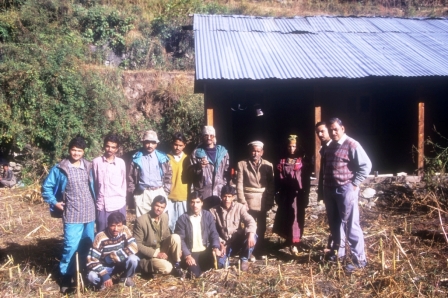Research
Projects
A multi-pronged approach is used to conduct research at the Park. Research teams have comprised select faculty members from the Wildlife Institute of India (WII), national consultants and international consultants with multi-disciplinary backgrounds. The research combines literature search, interviews, questionnaires, field surveys and intensive studies using different standard field methods and modern technology such as remote sensing and Geographical Information System (GIS). Tasks have included:
- Research leadership, coordination and integration and biological monitoring
- Assessment of the social context and socio-economic conditions of local community
- Feasibility reviews of village ecodevelopment investments
- Assessment of floral and habitat diversity and collection of baseline data to monitor vegetation
- Assessment of the faunal diversity, ecological requirements, responses to human activities
- Study on livestock grazing (resident and migratory) impacts
- Study of herb, mushroom and other minor forest products including medicinal plants collection in GHNP, their impact on ecosystems and possible mitigating measures through ecodevelopment
- Study on nursery cultivation of medicinal plants
- Survey of the current market pressures on medicinal plants
- Evaluation of crop damage in the Project area to suggest mitigating measures
- Assessment of issues related to soil erosion, landslides and provide technical support to the Park Management
Aspects of Research

Multi-disciplinary Approach
GHNP is probably the best example of systematically organized, coordinated multi-disciplinary research covering the length and breadth of vast terrain, its different components, and facets of a complex and dynamic high-altitude ecosystem, in a span of less than five years. Additionally, the present study has successfully demonstrated an active collaboration between scientists and field practitioners, various states/national/international organisations, subject specialists, individuals and NGOs.
Resource Maps
Prior to the commencement of the research project, the GHNP had very little documented information and resource base maps. The project has been able to provide a full set of resource maps the Park management based on the remote sensing and GIS technologies for different administrative constituent units of the GHNP. Likewise, most of the information has also been provided on the basis of different sub-watersheds. Thus, GHNP is one among a few conservation areas in the country wherein a complete spatial database is now available for use for management.
Baseline Information
Research has significantly contributed in providing a baseline information on the floral and faunal diversity, land-use, historic development, socio-economic conditions, people attitude and perception. The GHNP is one among the few conservation areas in the country wherein different taxonomic groups were studied simultaneously. These studies have thus far identified and documented 1,174 plants, and 377 animal species.
Research Findings
One important report, FREE-GHNP Research Project 1994-99 (Part of Forestry Education and Extension Project), was prepared by WII with input from experts had submitted research findings on the assigned task as a ‘Task Report’. In the process, altogether 30 task reports by various consultants, resource persons and researchers were made available on themes given above. This final report has been organized in the following six volumes:
Volume 1: The Project, Research Design, Resource Mapping and Physical Environment.
Volume 2: The Biological Environment – Floral Diversity, Vegetation Description and Collection of Herbs.
Volume 3: The Biological Environment – Faunal Diversity: Mammals, Birds, Reptiles, Amphibians and Insects.
Volume 4: The Social Environment – Historical Perspective, Socio-Economic Conditions and Man-Wildlife Conflicts.
Volume 5: The Social Environment : Ecotourism and Livestock Grazing.
Volume 6: Long Term Ecological Monitoring (LTEM).

